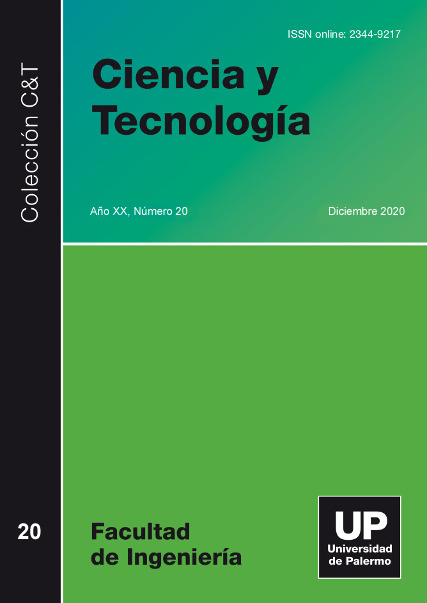Machine Learning en la detección de fraudes de comercio electrónico aplicado a los servicios bancarios
Resumen
Uno de los principales riesgos a los que están sometidas las entidades financieras son los ataques de fraudes electrónicos. Billones de dólares en pérdidas son absorbidas cada año por las entidades financieras debido a transacciones fraudulentas.
Este artículo plantea un modelo que considera los principales retos en el diseño de un sistema de detección de fraudes: a) clases altamente desequilibradas, b) distribución de estacionaria de los datos y c) la incorporación en línea de la retroalimentación de los investigadores de fraude ante las transacciones etiquetadas como sospechosas. La implementación del modelo en un conjunto de datos de prueba permitió predecir exitosamente la mayoría de casos de transacciones fraudulentas con un mínimo porcentaje de falsos negativos.
Descargas
Citas
Aite. (2014). Financial Institutions, Merchants, and the Race Against Cyberthreats.
Bhattacharyya, S., Jha, S., Tharakunnel, K., & Westland, J. (2011). Data mining for credit card fraud: A comparative study. Decision Support Systems.
Breiman, L. (2001). Universidad de California. Obtenido de Random Forest: https://www.stat.berkeley.edu/~breiman/randomforest2001.pdf
Correa Bahnsen, A., Stojanovic, A., Aouada, D., & Ottersten, B. (2013). Cost sensitive credit card fraud detection using bayes minimum risk. Machine Learning and Applications (ICMLA). 2013 12th International Conference.
Dal Pozzolo, A. (2015). Adaptive Machine Learning for Credit Card Fraud Detection.
Donaldson, S. E., Williams, C. K., & Siegel, S. (2019). Undertanding Security Issues.
Group, A.-P. W. (2019). Phishing Activity Trends Report - 2nd Quarter 2019.
Juszczak, P., Adams, N., Hand, D., Whitrow, C., & Weston, D. (2008). Off-the-peg and bespoke classifiers for fraud detection. En Computational Statistics & Data Analysis - Volume 52 (págs. 4521-4532). Elsevier.
Koshrow-Pour, M. (s.f.). Encyclopedia of Criminal Activities and the Deep Web. IGI Global.
Mendez, J., Fdez-Riverola, F., Díaz, F., & Corchado, J. (2007). Sistemas inteligentes para la detección y filtrado de correo spam: una revisión. Inteligencia Artificial. Revista Iberoamericana.
Merino, M. (01 de 2019). Conceptos de inteligencia artificial: qué es el aprendizaje por refuerzo . Obtenido de https://www.xataka.com/inteligencia-artificial/conceptos-inteligencia-artificial-que-aprendizaje-refuerzo
Mohri, M., Rostamizadeh, A., & Talwalkar, A. (2018). Foundations of machine learning . Second edition. Cambridge, MA : The MIT Press.
Morales, L. (2018). BIGDATA: 5 MÉTODOS PARA DETECTAR POSIBLES FRAUDES. Obtenido de https://www.grupo-novatech.com/bigdata-5-metodos-para-detectar-posibles-fraudes/
Murphy, K. (2012). Machine learning. A probabilistic perspective. London: The MIT Press.
Pathak, N., Pawar, A., & Patil, B. (2015). A Survey on Keylogger: A malicious Attack. International Journal of Advanced Research in Computer Engineering & Technology.
Security Standards Counsil. (2018). Requisitos y procedimientos de evaluación de seguridad. Version 3.2.1. Obtenido de https://es.pcisecuritystandards.org/minisite/env2/
Seguridad en Sistemas y Técnicas de Hacking. (2011). ¿Qué es el Hacking? Obtenido de https://thehackerway.com/about/
Téllez, J. (2004). Derecho Informático. México: McGraw-Hill, 3ra edición.
Viola, P., & Jones, M. (2001). Fast and robust classification using asymmetric adaboost and a detector cascade. Advances in Neural Information Processing System.
Whitrow, C., Hand, D., Juszczak, P., Weston, D., & Adams, M. (2009). Transaction aggregation as a strategy for credit card fraud detection. Data Mining and Knowledge Discovery.
Los artículos publicados en la Revista Ciencia y Tecnología son de exclusiva propiedad de sus autores. Las opiniones y el contenido de los mismos pertenecen a sus autores, declinando la Universidad de Palermo toda responsabilidad por los derechos que pudiera derivarse de la lectura y/o interpretación del contenido de los artículos publicados.
No se autoriza la reproducción, utilización ni explotación por parte de ningún tercero de los artículos publicados. Sólo se autoriza su uso para fines exclusivamente académicos y/o de investigación.









